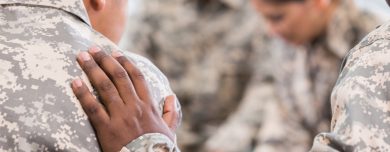
The Battle of Okinawa was fought between the United States and the Japanese Empire from April 1 – June 22, 1945. It became the last significant battle of WWII and was the most massive battle fought on the Ryuku Islands.
Read on to learn why the United States invaded Okinawa, the strategies that were used, and how it all ended.
Background of the Battle
On both April Fool’s Day and Easter Sunday in 1945, the United States launched the Fifth Fleet and the Tenth Army — about 200,000 combat troops — to the Ryuku Island of Okinawa. This was part of Operation Iceberg — an elaborate plan by the Americans to overtake the Ryukyu Islands and gain a better position to fight the mainland of Japan. The Japanese knew how vital Okinawa was in protecting their region and, as a result, intensely fortified the island with over 100,000 troops.
Strategies Used
The United States planned to overtake the eastern portion of the island, then head north, then gain control of the surrounding islands, and then finish by taking out the Japanese that were deep inside Okinawa. The strategy for the Empire of Japan was to use their surroundings to their advantage and stay deep inside the jungles, waiting for the Americans to come to them.
Intense Combat
The United States suffered very little conflict when they first arrived on Okinawa, but as they headed north, they faced relentless conflict and many causalities.
In early April, the Japanese attacked American ships with kamikaze warplanes. These planes were suicide missions that would fly directly into warships, killings themselves, and their target. The Japanese Empire launched 193 total kamikaze attacks, and the United States destroyed 169 before they could cause any damage. By April 7, the Japanese predicted the Americans had received so much damage from the kamikaze planes that they believed Yamato — a powerful battleship — could finish off their fleet. However, they were very wrong; and American planes quickly sunk the Yamato.
By late May, the United States gained control of Shuri Castle — a symbolic victory for the United States — and pushed the Japanese to the southern tip of the island. The Japanese were then left with the choice to surrender or take their own lives — many of whom chose the latter.
Results and Aftermath
The Battle of Okinawa was one of the deadliest battles in WWII and resulted in about 13,000 deaths and more than 35,000 injuries to American Soldiers. The Japanese lost about 110,000 troops and even more Okinawa civilians. After this victory, the Allies had an advantageous position to attack the Empire of Japan but, to save the lives of Americans, President Harry S. Truman decided to drop an atomic bomb on the city of Hiroshima and, then three days later, another on Nagasaki – thus ending WWII.
Last Words
At US Patriot Tactical, we are proud of the bravery, intelligence, and resilience our troops showed against the Empire of Japan during the Battle of Okinawa. We are thankful for their service and grateful for the victory.






